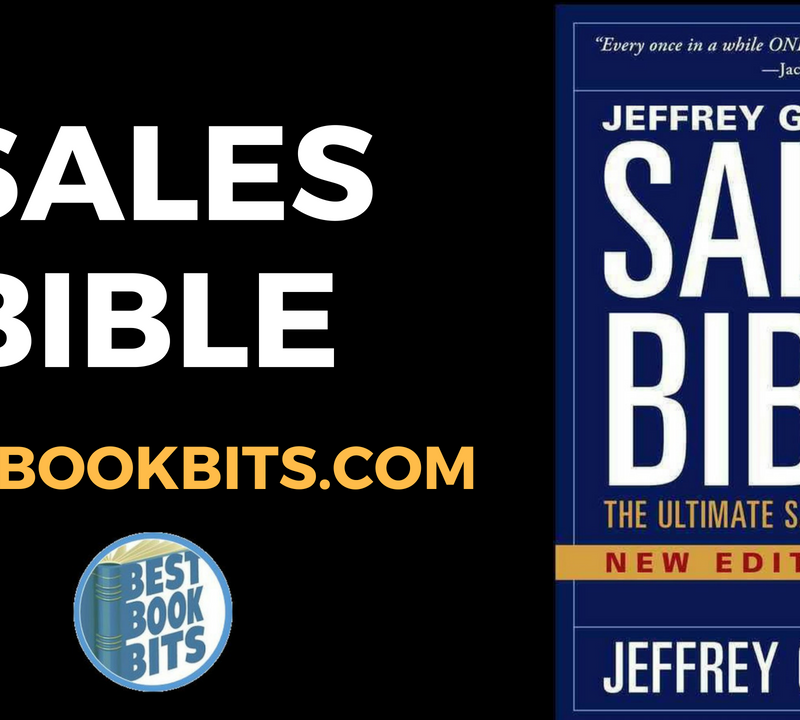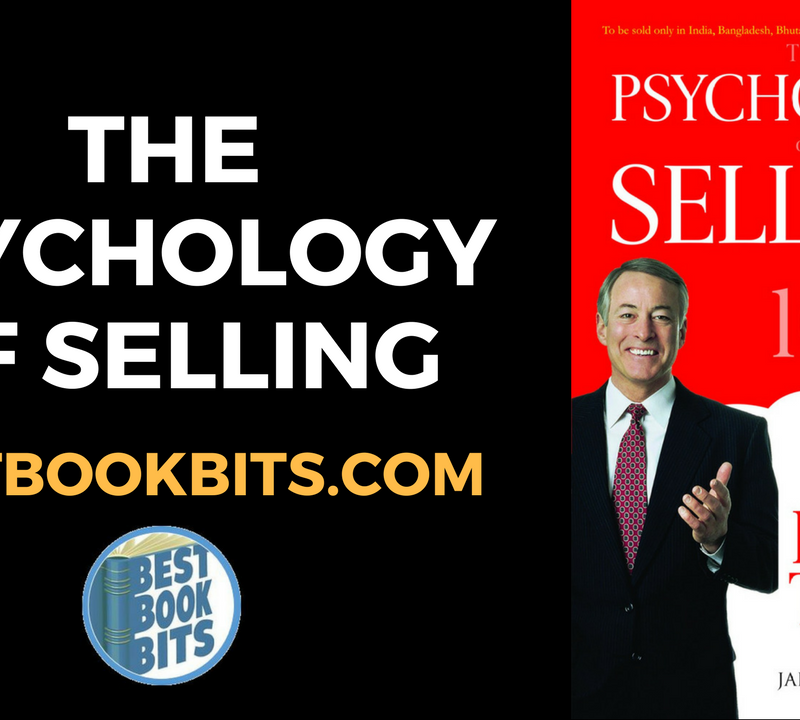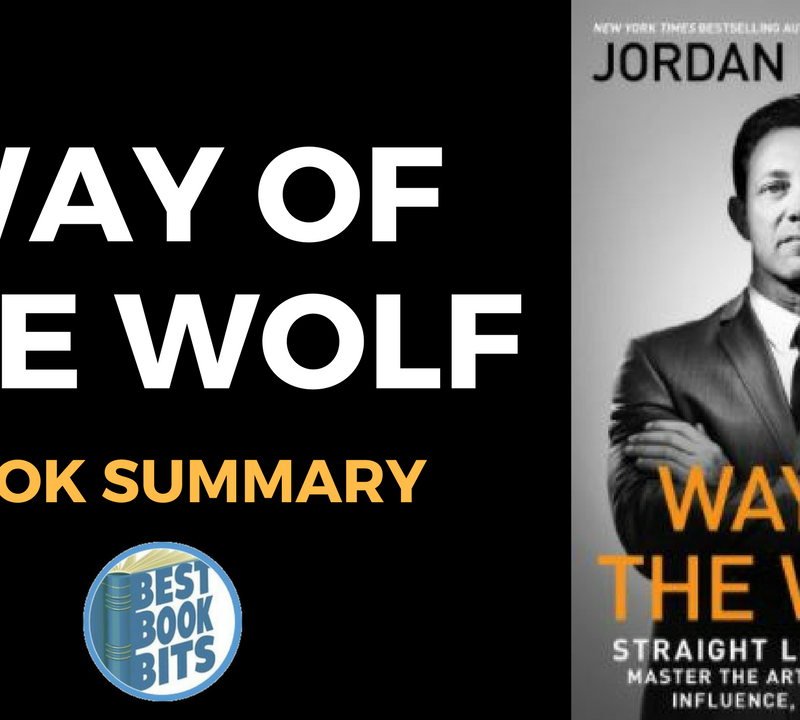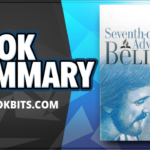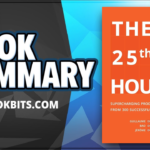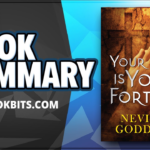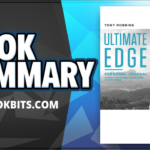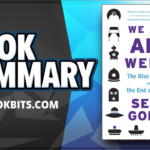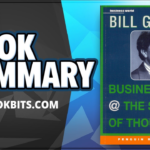Just a quick plug on bestbookbits consulting. If you have been thinking about starting or growing a YouTube channel or Podcast show, writing your first book or creating your first course. I consult creators all around how to monetize their passion and creative dreams. Book a free consult with me here to find out how we can work together so you can start making money online now.
Download the PDF Summary here
FOLLOW US HERE > |YouTube |Spotify | Instagram | Facebook | Newsletter | Website
80/20 Sales and Marketing By Perry Marshall: The definitive guide to working less and doing more
Guided by famed marketing consultant and best-selling author Perry Marshall, sales and marketing professionals save 80 percent of their time and money by zeroing in on the right 20 percent of their market ― then apply 80/202 and 80/203 to gain 10X, even 100X the success. With a powerful 80/20 software tool (online, included with the book), sellers and marketers uncover how to slash time-wasters; advertise to hyper-responsive buyers and avoid tire-kickers; gain coveted positions on search engines; differentiate themselves from competitors and gain esteem in their marketplace. With the included tools they’ll see exactly how much money they’re leaving on the table, and how to put it back in their pockets. Sellers will identify untapped markets, high-profit opportunities and incremental improvements, gaining time and greater profit potential. Supported by online tools from Marshall, including The 80/20 Power Curve, a tool that helps you see invisible money, and a Marketing DNA Test, a personal assessment that zeroes in on one’s natural selling assets, this timeless guide promises to change the game for seasoned and novice marketers and sellers.
Just a quick plug on bestbookbits consulting. If you have been thinking about starting or growing a YouTube channel or Podcast show, writing your first book or creating your first course. I consult creators all around how to monetize their passion and creative dreams. Book a free consult with me here to find out how we can work together so you can start making money online now.
Download the PDF Summary here
FOLLOW US HERE > |YouTube |Spotify | Instagram | Facebook | Newsletter | Website
Chapter 1: A Universal, Fractal and Exponential Law
The 80/20 law is universal, it applies to almost all areas. Once you know it, it’s written in you and you can’t help but notice it.
Most people think that all consumers of a product are the same. In fact, it is this view that is wrong. We will come back to that.
The law is also fractal: in other words, it repeats itself ad infinitum.
So,
The (20% of 20%) produces (80% of 80%).
So 4% produces 64%. That’s 80/20 squared.
And so on and so forth
(20% of 4%) produces (80% of 64%)
0.8% produces 52%. It’s the 80/20 law cubed.
Out of 10 vendors, the top two are as productive as each of the other 8.
In practice, the first 2 sellers are 16 times more productive than each of the other 8 (40% for n1 and 2, 2.5% for each of the other 8. 40/2.5 = 16).
An important principle here is positive feedback. The idea is that one behaviour generates more of the same. This is one of the principles of the 80/20 law.
Finally, this law is exponential.
Think of your business as a Richter scale, an exponential scale (10, 100, 1000). You have to think in multiples of 10 and not in linear logic.
“Everything that really matters in business is not linear, it is exponential. 80/20 is about the laws of power – a power of 10… The ability of customers to spend money is not incremental, it is multiple.”
Perry Marshall gives many examples to support his theory.
- The three of the ten richest people in the world own 55% of the wealth of the ten combined.
- 80% of the world’s wealth is concentrated in two countries.
He then explains that the 80/20 law does not focus on the average but on the extremes.
The power curve focuses on ability, on the best and not the average.
3:47 Chapter 2: Rack the shotgun
Selling to the right person is more important than any aggressive selling technique. “Rack the shotgun is about sending a signal to your customers and seeing how they react.
It is not enough to qualify good prospects, but also to disqualify those who are not likely to help you achieve your goals. Marshall describes how you too can disqualify “brands” that are not going to be profitable for you. This chapter shows you how to target the right audience.
4:17 Chapter 3: You can do better
In this chapter, Perry Marshall explains in more detail how the 80/20 law is universal.
- For example, 80% of sales are made by 20% of salespeople.
- 80% of the complaints come from 20% of product defects
- 80% of your productivity is produced by 20% of the tasks on your to do list.
- Etc.
How to use the 80/20 law to serve your business
4:45 Chapter 4: 80/20 traffic
Here, Perry Marshall focuses on his background as a salesman, making a first foray into his professional past as a salesman.
He explains several possible channels to attract prospects by encouraging the reader to be very good at one of these channels, as well as his 7 golden rules of selling.
The most important ones for me are to qualify the prospects from the start and to determine your acquisition cost.
5:12 Chapter 5: The 8020curve.com online tool
One of the major assets of the book is its online tool available free of charge.
You can predict how many people would react to an event X (e.g. the price of your product), at a price range between X and Y.
Here you can accurately predict your current or future business (once you have used and optimized your use of the 80/20 law).
For example, let’s say you want to sell a €100 product to 1,000 people.
100 people buy it.
Your TO (turnover) is therefore 10,000 euros (100×100).
What the curve says is that in practice:
- 223 people are prepared to buy a product from you at €50 (half as much). This will not increase your turnover.
- 20 people are prepared to buy a product from you at €400 (4 times more)
- 6 people are prepared to buy a product from you at €1000 (10 times more)
- 3 people are prepared to buy a product from you at €2000 (20 times more)
So you can create a:
- First offer at €100 (100×100: 10K euros turnover)
- Second upsell offer at €400 (20×4: 8K euros turnover)
- Third upsell offer at €1000 (6×1000: 6K euros turnover)
So in this example, your turnover would go from 10K with one offer to 20K euros with three offers. So it would double.
Of course, you won’t sell the same thing in each case. The potential customers exist, it’s up to you to create the offer that will convince them to buy it. It’s up to you to give them maximum value.
7:07 Chapter 6: the power triangle
Just a quick plug on bestbookbits consulting. If you have been thinking about starting or growing a YouTube channel or Podcast show, writing your first book or creating your first course. I consult creators all around how to monetize their passion and creative dreams. Book a free consult with me here to find out how we can work together so you can start making money online now.
Download the PDF Summary here
FOLLOW US HERE > |YouTube |Spotify | Instagram | Facebook | Newsletter | Website
To sell something, you need to generate traffic (leads). Then you have to convert the traffic (customers). Saving means that you have to make money with what you sell (economics/TO).
This cycle is repeated according to the 80/20 law. You generate traffic for 4% (20%x20%), convert them into customers, which translates into your turnover.
The 4 questions to ask yourself at the beginning when you want to sell a product:
- Who will buy it? (Traffic)
- What can I do to convince them to buy it? (Conversion)
- Can you reach them at a lower cost? (Economics)
- Can they afford to pay you? (Economics)
In fact, you have to start with the end in mind. Sell results, not processes.
The Economy dimension includes both your turnover and the value perceived by your customer.
The sale is a disqualification process. You must find the 20% that will count for you as soon as possible. Upsell (more expensive products) and cross-sell (products that complement each other).
He then discusses the possible purchase of lists of prospects in the USA, lists of two kinds: compiled (e.g. all American dentists) or response lists (non-approved dentists). For readers living in the USA, he specifies sites where to find lists.
Just a quick plug on bestbookbits consulting. If you have been thinking about starting or growing a youtube channel or podcast show, writing your first book or creating your first course. I consult creators all around how to monetize their passion and creative dreams. Book a free consult with me using the link in the description to find out how we can work together so you can start making money online now.
8:56 Chapter 7: Transformation
To make a lot of money, your product must address one of the following urgent issues:
- Great pain: pain and great inconvenience, great loss of money, threat to their lives.
- Great pleasure: expectation of pleasure that borders on the irrational.
Then you have to use so-called disqualifying questions, which will allow you to select only those customers who are really important to you.
Just a quick plug on bestbookbits consulting. If you have been thinking about starting or growing a YouTube channel or Podcast show, writing your first book or creating your first course. I consult creators all around how to monetize their passion and creative dreams. Book a free consult with me here to find out how we can work together so you can start making money online now.
Download the PDF Summary here
FOLLOW US HERE > |YouTube |Spotify | Instagram | Facebook | Newsletter | Website
The 5 preliminary (or disqualifying) selection questions:
- Do they have the money?
- Do they have a real and urgent suffering to relieve or an urgent pleasure to satisfy? Think here of the sufferings you have experienced and overcome in your life and the major pleasures you have experienced.
- Do they adhere to your Unique Value Proposition or USP?
- Sub questions here:
- Why do you deserve their attention?
- Why would they buy from you?
- How is your product unique? service/market/product/customer experience/price
- What unique guarantee can you offer?
- Can they say Yes? (He cites here the example of a product intended for doctors but refused by their assistant. Think here about who your end customer is and how to reach them).
- Does what you’re selling fit into their overall plan?
He then gives a material example of a sales letter (pp 61-64) that was very successful on his site. I really recommend reading and analyzing it if you write sales letters. Here are the key steps in this letter.
- Title: Start with the urgent suffering or pleasure and propose a key benefit of your product…
- Show empathy. Show that you can express how they feel as if they were describing it themselves, from the very first sentences.
- Talk about pain and suffering. Add elements of pleasure.
- Find the point of pain and press it
- Use headings, italics and bold type for fast readers (which are usually the 20%).
- Make a big promise
- Underline the urgent pain or pleasure
- End with a call to action (or CTA).
11:08 Chapter 8: Your Unique Selling Point (USP)
Here are the 4 questions the USP must answer:
- “Why should I listen to you?”
- “Why should I do business with you and not with someone else?”
- “What can your product do for me that no other can do?”
- “What can you offer me as a guarantee that no one else offers?”
You have 5 possible ways to be unique.
- Service. Guaranteed friendliness, delivery, real person on the phone, etc.
- Marketplace. For example, companies with less than 10 employees.
- Product. Guaranteed result, tailor-made experience and warranty.
- User Experience
- Market price
Also think about your personal USP that contributes to the choice your customers make when they choose you.
Also focus on continuous improvement and mastering what you do. Aim for excellence.
12:01 Chapter 9: Test to increase your turn-over
Perry Marshall talks about Google Adwords as a major testing tool. He takes this opportunity to promote his book on Google Adwords (and his free online training) and explains the concept of split testing.
He insists on the fact that the tests allow you to refine your offer and above all to multiply your turnover.
You can test your Adwords keywords, your capture pages, your sales pages and your order pages.
He recommends the test of:
6 keywords, 3 capture pages, 2 sales pages, 1.5 times order page
6 x 3 x 2 x 1.5 = 54X. Your initial results will be improved by the same amount.
This also works for your websites. Concentrate on the 20% most viewed pages and optimize them.
12:51 Chapter 10: Massive scalability
He then indicates his preferred order for your sales.
In Essentially, choose Google Adwords then SEO, then emails, social networks, etc…
Moving from the targeted niche market to the mass market, not the other way around.
He also promotes his free online test – Is Facebook right for me – which I recommend.
13:14 Chapter 11: Expand and Diversify
This chapter gives advice on how to grow and diversify in order to succeed.
First of all, Marshall says that search engine traffic will probably represent a very small percentage of your potential customers. He also says not to rely too much on a single source and to diversify. The chapter continues with tips on how to use the power curve to go in the right direction and get much better results.
13:42 Chapter 12: Earning more with each client
If there was only one thing to remember about this whole chronicle, it would be this.
Out of 100 customers,
20% are willing to spend four times as much money.
4% are willing to spend 16x more.
Your mission is to concoct offers they can’t resist.
Among repeat buyers,
- 20% represents 80% of repeat sales.
- 20% of the orders represent 80% of the quantity.
- But also, 20% of the orders represent 80% of the total quantity and diversity (different types of products purchased at the same time).
He then looks in detail at the example of Starbucks, which sells coffee but also espresso machines for larger customers. While the average customer spends $1.4 per 1000 customers, 1 will be willing to spend 537 dols. Hence the sale of an espresso machine at $275 in store.
14:43 Chapter 13: Winning guarantees
Sell results and offer unique guarantees.
A powerful USP can be: “If you are [type of eligible customer] and you [commit $X and follow steps Y and Z], then you will get [specific results] or [penalty for me/provider]. »
This USP removes uncertainty and doubt and provides results that allow you to charge more than your competitors. It also attracts better customers (not those who want the cheapest option but the option that best suits their needs).
To get higher prices than anyone else, guarantee better results than anyone else.
15:25 Chapter 15: How much do you want to earn per hour?
Analyze your productivity.
The power curve says:
- If you work 8 hours a day, at an hourly rate of €20 (or €160 a day)
- The least productive hour actually earns you €8.96.
- The most productive hour earns you €53.74.
The average minute of work earns you 33 cents, but the best minute of the day earns you €15.49!
Try to take a closer look at what you can sell and at what price.
Then, whenever possible, delegate lower value-added tasks to physical or digital assistants. This will allow you to concentrate on the tasks that bring you the most value.
16:11 Chapter 16: Make a lot of money doing what you love
Focus on your strengths and those of your teams if you are a manager.
Perry Marshall offers a free online test, the marketing DNA to know your profile in 4 dimensions (with 2 possibilities per dimension – alchemist vs producer / recorded vs live / words vs images and empathic vs analytic).
It also recommends conducting surveys on your major capabilities and those of your teams.
Ask 5 people who know you well what your major talent is and what you do better than others.
Analyze and then share the results.
16:50 Chapter 17: How to recruit a good salesperson
Here he details the practicalities of recruiting salespeople. He focuses on case studies rather than traditional recruitment interviews.
Just a quick plug on bestbookbits consulting. If you have been thinking about starting or growing a YouTube channel or Podcast show, writing your first book or creating your first course. I consult creators all around how to monetize their passion and creative dreams. Book a free consult with me here to find out how we can work together so you can start making money online now.
Download the PDF Summary here
FOLLOW US HERE > |YouTube |Spotify | Instagram | Facebook | Newsletter | Website
He recommends that you focus on 5 questions to ask, built like an upside-down sales tunnel.
- The money: will the salary you offer suit them?
- Suffering: do they really need to change jobs now?
- USP: Would they bring complementary skills to your team?
- Do they really want the job?
- Is working for you part of their overall ambition?
17:26 Chapter 18: Recruiting Your Personal Assistant
Whether virtual or real, your personal assistant will be useful for handling low value-added tasks and those you are not good at. He gives several recommendations here.
17:40 Chapter 19: Dismiss 10% of your customers and staff
He then goes on to repeat Jack Welsh’s rule at General Electric, which is to lay off the bottom 10% of employees each year. This rule also applies to customers. He also recommends focusing on the customers who create the most value and separating from those who create the least value (and who are often the ones who cause you the most problems).
18:07 Chapter 20: The Saddle Curve
Using the example of the critics of Hillary Clinton’s book on Amazon, he makes a point about people who are very supportive or very opposed.
His advice is to find a point of controversy in your market and position yourself on it. You will provoke more reactions and interest if you are controversial. You will be on more emotional ground.
18:30 Chapter 21: Research to be done in an afternoon
He suggests 3 questions to ask in your surveys for prospects and customers:
- What is your most important question about [your topic]? (the what)
- Why would a good answer or solution make a difference in your life? Please elaborate. (the why)
- How difficult has it been to find a good answer or solution so far? (the how). Pay attention to the answers of those who said “very difficult” and gave long answers. You will find the most motivated needs and benefits here.
It also details the information search process used on markets by his friend Glenn Livingston, notably via Google (Googleblogs, googlealerts, googlekeywordtool, etc.) on pages 164 to 169.
19:19 Chapter 22: What to focus on
Focus on 6 essential elements for your business:
- Money in and money out (and therefore your ROI or return on investment)
- The clicks on your Google Adwords keywords
- The best conversions of your keywords
- Your capture pages
- Your sales and order pages
- Individual traffic sources (affiliates, banners, emails)
19:43 Chapter 23: RFM (Recency + Frequency + Money)
Perry Marshall indicates 3 key criteria to be considered here.
- Recency: How long have your customers been buying? Who bought most recently?
- Frequency: Do all people buy? Who bought the most often?
- Money: what is the average amount spent by your customers? who spent the most?
In a three-dimensional matrix, you can find your most important customers in these three dimensions combined (diagram p. 181) and focus your efforts primarily on them.
20:18 Chapter 24: Generosity, Your Responsibility as a Successful Entrepreneur
It is a discourse on motivation, involving religion, charity and equality. In particular, it emphasizes the importance of generosity towards the most disadvantaged, the bottom 20% of the curve. He insists on his habit of donations and recommends that each entrepreneur commit part of their money to this.
20:43 Chapter 25: On his journey as an entrepreneur
The last chapter of the book is mainly composed of life stories and anecdotes. In essence, his advice is to make a difference in one’s own life and the lives of others through knowledge and application of the 80/20 law. His last piece of advice: “Don’t be too aggressive on sales, use better marketing”.
Just a quick plug on bestbookbits consulting. If you have been thinking about starting or growing a YouTube channel or Podcast show, writing your first book or creating your first course. I consult creators all around how to monetize their passion and creative dreams. Book a free consult with me here to find out how we can work together so you can start making money online now.
Download the PDF Summary here
FOLLOW US HERE > |YouTube |Spotify | Instagram | Facebook | Newsletter | Website

